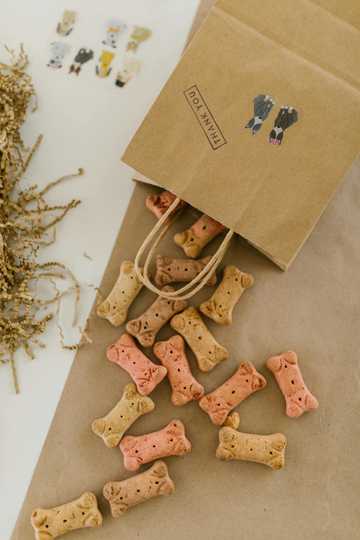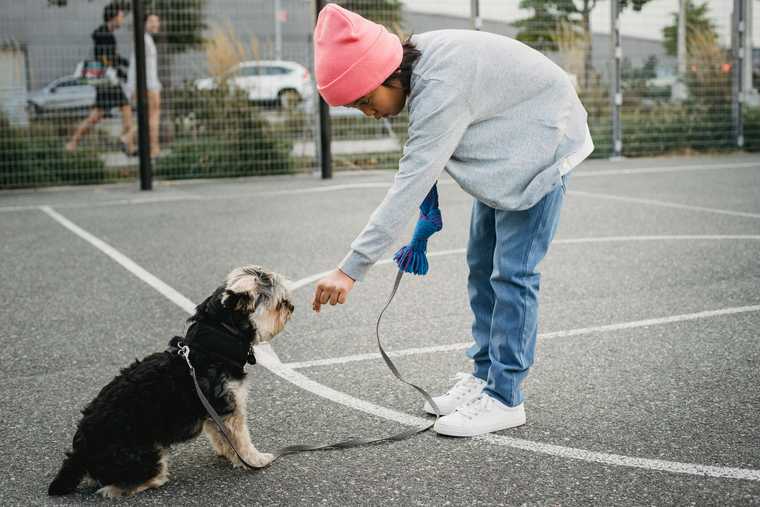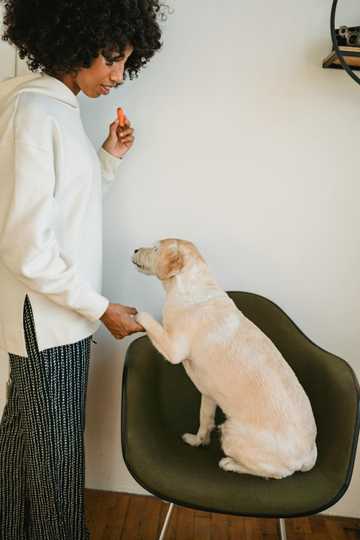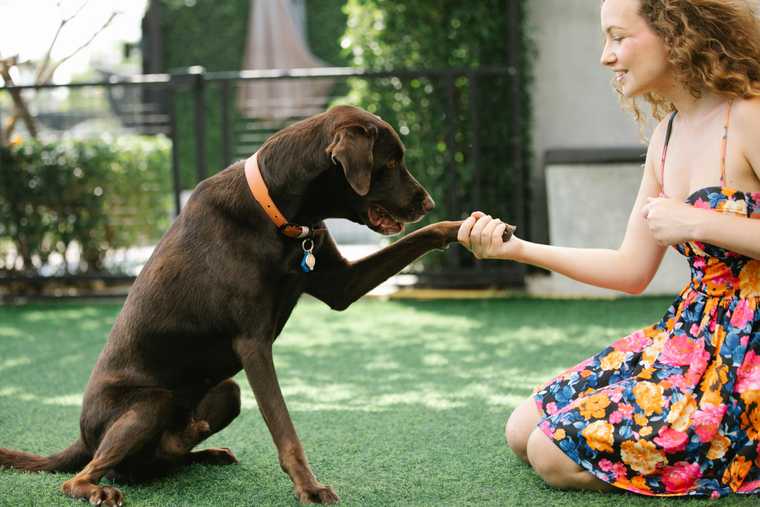How to Train your Dog to Shake Hands

Unlocking the secrets of your dog's brilliance through basic commands and playful tricks isn't just about having fun together – it's a roadmap to a deeper connection, unwavering trust, and a well-behaved furry companion.
In this guide, we'll dive into the delightful world of canine communication with a fun and easy trick: the “Handshake.” So, let's dive in and shake things up!
Preparation
There isn't much to prepare in this case; however, it's always best to have everything you need next to you to avoid interrupting the training process.
For this particular command, you’ll need:
A clicker
A clicker is a handy tool with a distinctive clicking sound, making it super effective for training your dog. You'll find various types of clickers available in pet stores, but guess what? You can also snag one right inside the Woofz app! The beauty of using a clicker is its simplicity: it gives a clear and precise signal to your pet, letting them know they've done something right.
However, if the clicker isn't quite your jam for any reason, you can always opt for a verbal marker, like saying "Yes" instead.

Treats
There are various dog and puppy treats to choose from in the market. It's a joy to explore and find out which ones become your dog's absolute favorites. Just be sure to steer clear of treats with artificial ingredients or fillers such as Wheat, Soy, and Corn.
Another crucial tip is to be mindful of not exceeding 10% of your dog's daily meal allowance in treats. Over time, even small indulgences can sneakily lead to extra pounds for your dog, potentially causing health concerns – and we certainly want to avoid that.
If your pooch lacks motivation with treats from the package, try real meat treats (e.g., boiled beef or chicken, liver pate, low fat or nonfat string cheese).
P.S. It's always best to have a variety of treats, including both tasty ones and super tasty ones, to keep your dog motivated during training.
A calm environment to start training in
Regardless of the trick or command you want to teach your dog, it’s always best to start in a distraction-free environment, such as your home. Once your dog reliably performs a command, you can gradually introduce more distractions (e.g., going to the street or park) to improve your dog’s focus on you.
First, Condition Your Dog to a Clicker or a Marker Word
The first thing you need to do (unless you’ve done it already) will be conditioning your dog to a clicker sound or a marker word.
A marker word and a clicker sound tell your dog they've done well and will be rewarded, so it’s crucial that your dog understands that. We recommend teaching your dog both methods and then choosing the one you prefer for different types of training.
If you need extra help with this, download the Woofz app for more guidance.
Teach your dog to understand the clicker sound
Prepare a clicker and some treats, and follow the instructions below:
- Wait for the dog's attention.
- Click and immediately after give a treat after the sound.
- Repeat 10-15 times: Your dog may be looking at you or may not; both are okay.
That’s it; your dog has learned that after the click, they will be rewarded.
Teach your dog to understand the marker word
Now, let’s teach your dog a marker word “Yes.”
- Take some treats (or some of your dog's meal) in your hand.
- Say “Yes,” then promptly treat your dog.
- Repeat this 10-15 times in a row: Your dog may be looking at you or may not; both are okay.
After this, you can use a marker word or a clicker sound, as suggested in the upcoming instructions for the "Handshake" cue.
Second, Teach Your Dog to Sit
Step 1
Stand in front of your dog and ensure they're facing you. Use your dog's name to grab their attention, as it's crucial to start with their name before any command.
Step 2
Hold a treat close to your dog's nose. Gradually raise the treat above their head until they naturally sit down. As soon as their butt touches the ground, say "Sit" and reward them with the treat.
Tip: Raise the treat slowly above the puppy's nose and head to help them focus without rushing.

Step 3
Use the release cue "Okay" and repeat the process.
If your dog stands up before you release them, don't worry. Simply start again and reduce the time they sit a little.
Note
If your dog responds better to visual cues, you can revert to using the hand gesture to prompt them to sit. For example, hold your hand palm-up, with your fingers pointing upward, and then smoothly move your hand down.
Pro Tip
If your dog struggles to sit, try stepping back. As they move toward you, step forward again while maintaining the treat in the same position.
Teach Your Dog to Shake Hands In a Few Minutes

Step 1
Prepare some treats and a clicker (if you want to use it instead of a verbal marker). Ask your dog to sit.
Step 2
Take a yummy treat in your hand so your dog can sniff it but can’t get it. Wait for them to paw at your hand (this might take some time), and as soon as they do, click or say “yes” and immediately give them the treat.
Repeat 3-5 times until they paw right after you take your hand out.
Tip: Ensure your dog is aware of the treat in your hand. If they’re confused, let them sniff your closed fist to regain their focus. You can also move your hand from side to side to encourage them to paw at it.
Step 3
Once your dog becomes consistent with pawing at your hand with a treat inside, you can increase the difficulty by removing the treat and holding out an empty palm.
As soon as your dog gives you their paw, make a quick handshake with them, then click or say “Yes” and reward them immediately after.
Step 4
Gradually increase the length of time you’re “shaking hands.” Extend your open palm, wait for your dog to give you their paw, shake it for a bit longer than before, then click/say “Yes” and reward your dog.
Repeat 2-3 times until your dog does it consistently.
Step 5
When your dog already holds their paw in your hand, start introducing the “Shake” cue. Say “Shake” and offer your dog your hand to shake. Once they do it, mark (with a clicker or a “Yes” word) and give them a super tasty treat for that. They’ve done great!
Repeat a few more times so your dog performs the command without hesitation.
Step 6
Switch hands and try the same command. You can start straight away with a verbal cue, but if it’s confusing for your dog, take a step back.

Advance This Cue
If your dog is already a pro in shaking paws, you can make this command a bit more difficult by asking for it in various environments with more distractions, doing it with other people, and even rewarding only for the fastest and most precise attempt.
Wrap-Up
Teaching your dog to shake hands is a delightful and simple trick to master. We hope you've had fun following this guide and that you're now proud of your pet for learning yet another adorable trick!
If you're keen on exploring more fun commands or mastering basic obedience, don't hesitate to download the Woofz app for easy-to-follow, step-by-step instructions.

Passionate team dedicated to help pet owners raise safe and obedient dogs, fostering meaningful connections with their furry companions.

A certified dog trainer with a background in Behavior Science, Canine psychology, and Pet First Aid Safety